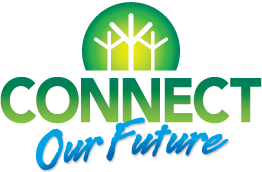The Return on Investment (ROI) tool developed for the CONNECT region by Urban3 estimates the potential revenue generation by different development types in a particular area, or for particular parcel(s) so that jurisdictions may weigh that revenue against the costs of infrastructure and service delivery. The tool helps decision-makers best determine where to allocate resources and what types of development patterns will result in long-term “fiscal sustainability” for the community.
Why is this important to your community?
Revenue modeling can help communities avoid land use decisions that can be costly in the long term, and make decisions that will positively contribute to the communities’ fiscal health. The tool assesses the costs and benefits of downtown revitalization, compact versus suburban development, infrastructure upgrades, and community investment, so that decision-makers have access to the longer-term impacts of various development patterns on their revenue or expense streams. The report on revenue generation for the CONNECT region revealed not only differences in revenue generation across the region based on development form and cities’ past investments, but also differences in the revenue production within individual communities. For example, the report found a stark difference in tax revenue per acre produced by big box sites and downtown development sites. Shelby’s downtown generates almost $400,000 in tax revenue on 25 acres compared to the Cleveland Mall, which produces only $164,000 on more than 40 acres. That amounts to 2.5 times the revenue per acre in downtown. Information such as this can be a major asset to decision-makers as they consider where development can and should occur. The revenue generation modeling tool produced for the CONNECT region can readily be customized to individual communities at a community, neighborhood or parcel level, so that decision-makers can access cost-benefit analyses and return-on-investment information for future land use decisions and capital investment projects such as infrastructure.
Skip directly to
How Does It Work?
Resources
Using the Tool
Partners
Where Has It Worked?
Where is it appropriate to use?
What priorities does it address?
What other tools are related?
How does it work?
CONNECT’s local Return on Investment tool measures the potential revenue and overall economic impact for hypothetical or proposed projects for a city, community, or region. This tool utilizes the concept of “value per acre” for different types of uses and locations to measure the tax proceeds and determine the best value for the local government. The tool can help communities compare multiple development types at the same location by examining actual tax proceeds from similar development types in the same community or from a comparable community. This will allow a local government to weigh alternative development proposals or future development types on a given site. The tool can also compare similar development types at different locations to generate data on the best or most profitable location for future investments.
The tool estimates the potential revenue that could be generated based on the nature and location of the future development. To do this, the tool uses data collected from local municipalities for comparable situations, such as property values and taxes by land use type, to gauge the tax revenue potential of the development. Like scenario planning tools, the ROI calculator generates both numeric and visual outputs that illustrate the benefits and potential drawbacks of development choices. Communities can utilize this tool, with help from regional agencies such as a COG, to inform capital improvement and facilities planning and long range land use planning decisions, to shape not only a community’s development footprint but also its fiscal sustainability. When revenue outputs of the tool are coupled with locally generated cost to serve estimations, effective cost-benefit analysis across multiple development scenarios is possible.
Resources
- Capital for Healthy Families and Communities: Social Impact Calculator
- CONNECT our Future – Local Solutions for a Regional Vision
- The Brookings Institution Center on Urban and Metropolitan Policy: Investing in a Better Future: A Review of the Fiscal and Competitive Advantages of Smarter Growth Development Patterns
Ready to get started?
Using the Tool
- The CONNECT region’s ROI tool was developed to help local communities analyze the revenue generation potential per acre of various land use and development patterns (or project types), and analyze potential revenue generation relative to each other. Because the tool has a GIS-based interface, you will need to collect data to be input into the ROI calculator.
- Contact the COG to discuss your goals and to identify the types of data that will be needed in order to use the ROI tool effectively. For instance:
- To develop land use policies that influence growth patterns, collect data on property taxes and property values for the types of development that you expect may occur in the future in different areas of the community. Review the CONNECT Our Future “Local Solutions for a Regional Vision” report (LINK) prepared by Urban 3 for the CONNECT region to identify local place or community types, or project types that you may want to analyze.
- Couple the local ROI analysis with locally generated cost-to-serve data estimates, including costs for building new or improving existing facilities (e.g., water/sewer infrastructure, transportation facilities, schools, etc.), and long-term operational costs including police and fire coverage, to arrive at scenario-specific cost-benefit analysis. Cost data can be extracted from local government budgets and interviews with government department heads. Review the Community Guide to Development Impact Analysis developed by the University of Wisconsin-Madison’s Land Information & Graphics Facility for worksheets to help calculate fiscal impact and cost of community services.
- To analyze the tax revenue potential of site-specific development proposals, or development alternatives, and their impact on surrounding property values, historical tax and market data are needed for the area in question. If this information is not readily available, data from comparable communities may be substituted.
- Work with the COG to input the collected data into the ROI calculator. Both inputs and outputs should be maintained in a user friendly database (e.g., spreadsheet) to make results easy to understand, share and update.
- Use the results of ROI analysis to help the community establish and substantiate comprehensive plan policies; to develop and prioritize the community’s annual CIP; and to help public officials understand the cost and returns of prospective investments (both public and private sector infrastructure)when making decisions about land use and development.
Partners
- Colleges and Universities
- Community Service Providers
- Departments of Education / School Districts
Where has it worked?
Cost of Land Use Fiscal Impact Study - Davidson, NC
 Image Source: Pure & Simple Organizing.
Image Source: Pure & Simple Organizing.
Contact
Kim Fleming, Economic Development Manager
Town of Davidson
704-940-9622
kfleming@townofdavidson.orgAbout the Program
The town recently worked with a consultant to complete a land use fiscal impact study of the services that the town provides to the commercial and residential sectors of the community. The Cost of Land Use Fiscal Impact Analysis is the first step of a multi-phase fiscal impact analysis evaluation and it evaluates the fiscal impact of specific types of land uses or locations grouped together. Similar to the CONNECT RoI took, in this type of analysis the characteristics of various residential (i.e., single family, multifamily), nonresidential (i.e., retail, industrial, office), and mixed use “prototypes” are defined and a “snapshot” approach is used to determine the annual costs and revenues from each land use prototype to the jurisdiction. In this analysis, prototype land uses are grouped together to produce fiscal results for sample areas in the Town. The factors used to define these prototypes typically include household size, market values, number of employees, and vehicle trips.
In general, a fiscal impact evaluation analyzes revenue generation and operating and capital costs to a jurisdiction associated with the provision of public services and facilities to serve development—residential, commercial, industrial, or other. A fiscal impact analysis is different from an economic impact analysis in that a fiscal impact analysis projects the cash flow to the public sector while an economic impact analysis projects the cash flow to the private sector, measured in income, jobs, output, indirect impacts, etc.
Why it works
The Cost of Land Use Fiscal Impact Study seeks to answer the question, “What type of development pays for itself?” The results will assist the Town with future land use and financial planning. Land use planning can be assisted by understanding the types of land uses that are more fiscally advantageous to the Town’s bottom line. While fiscal zoning is illegal, the analysis can help inform an appropriate mix of land uses, knowing that some land uses are “contributors” while others may be “recipients.” Second, the analysis can assist in long-term financial planning as well as identify the need for and type of additional revenue sources.
Davidson’s Cost of Land Use Fiscal Impact Study identified eight residential and ten nonresidential land use prototypes six of the eight residential prototypes generate more revenues than expenditures—a net surplus. The results are due to the Town’s revenue and service structure—with property tax generating the majority of revenue to the Town as well as the types of services provided by the Town. Because the Town is not responsible for expensive population-driven services such as education and human services, the revenue and service structure tends to favor residential development with a few exceptions.
For nonresidential land uses, seven of the ten prototype areas generate net surpluses. Downtown Mixed Use and the Circles @ 30 Mixed Use areas generate the largest surpluses due to property, sales, and prepared food tax revenues generated and low relative costs. Office development at a high enough property value tends to generate net surpluses. For the Downtown prototype areas, while all generate net surpluses, when office uses are included in the mix, the results are better fiscally.
- Community Service Providers


